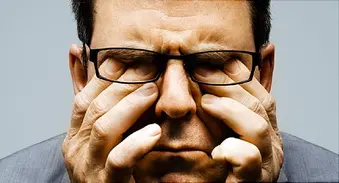Sleep Quiz: Why You Need Your ZZZs
Medically Reviewed by Jennifer Robinson, MD on January 19, 2022

Question 1/13
How many times a day is your body programmed to feel sleepy?
- One
- Two
- Three
- Four
Question 2/13
Which group needs up to 13 hours of sleep per night?
- Preschoolers
- School-aged children
- Adolescents
- Adults
Question 3/13
Adults need less sleep as they grow older.
- True
- False
Question 4/13
About half your sleeping hours are spent dreaming.
- True
- False
Question 5/13
Which of the following is the most common cause of nightmares?
- Eating before going to bed
- Excessive alcohol consumption
- Stress and anxiety
- Illness with a fever
Question 6/13
Sleepwalking may include other complex activities, such as:
- Driving a car
- Moving furniture
- Eating
- All of the above
Question 7/13
Driving while drowsy is similar to driving while intoxicated.
- True
- False
Question 8/13
If you fall a few hours behind in the amount of sleep your body needs, you can never make it up.
- True
- False
Question 9/13
Which of the following can result from not getting enough sleep?
- Diarrhea
- Blurred vision
- Low-grade fever
- All of the above
Question 10/13
Not getting enough sleep can lead to weight gain.
- True
- False
Question 11/13
Sleep disorders and chronic sleep loss have been linked to which of the following?
- Heart disease
- Stroke
- High blood pressure
- All of the above
Question 12/13
Insomnia is considered chronic when a person has difficulty falling asleep or staying asleep at least two nights a week for a month or longer.
- True
- False
Question 13/13
Sleep apnea is characterized by pauses in breathing while you sleep. These pauses can occur how many times per hour?
- Up to 5 times
- Up to 10 times
- Up to 20 times
- 30 times or more